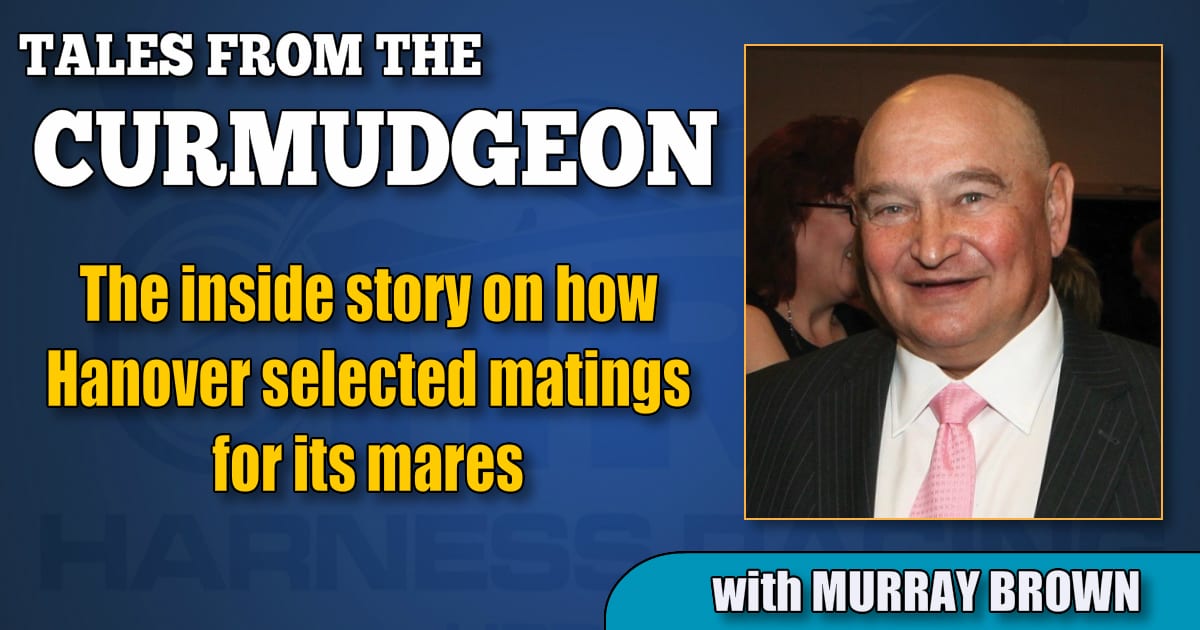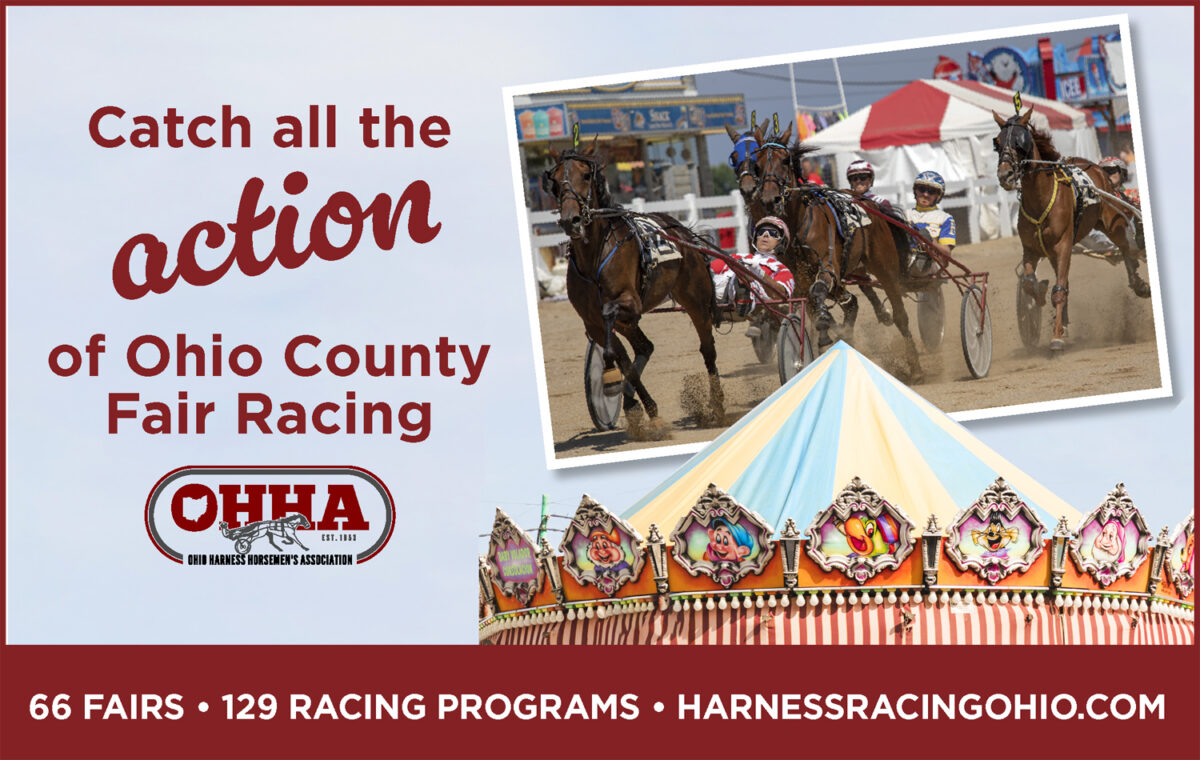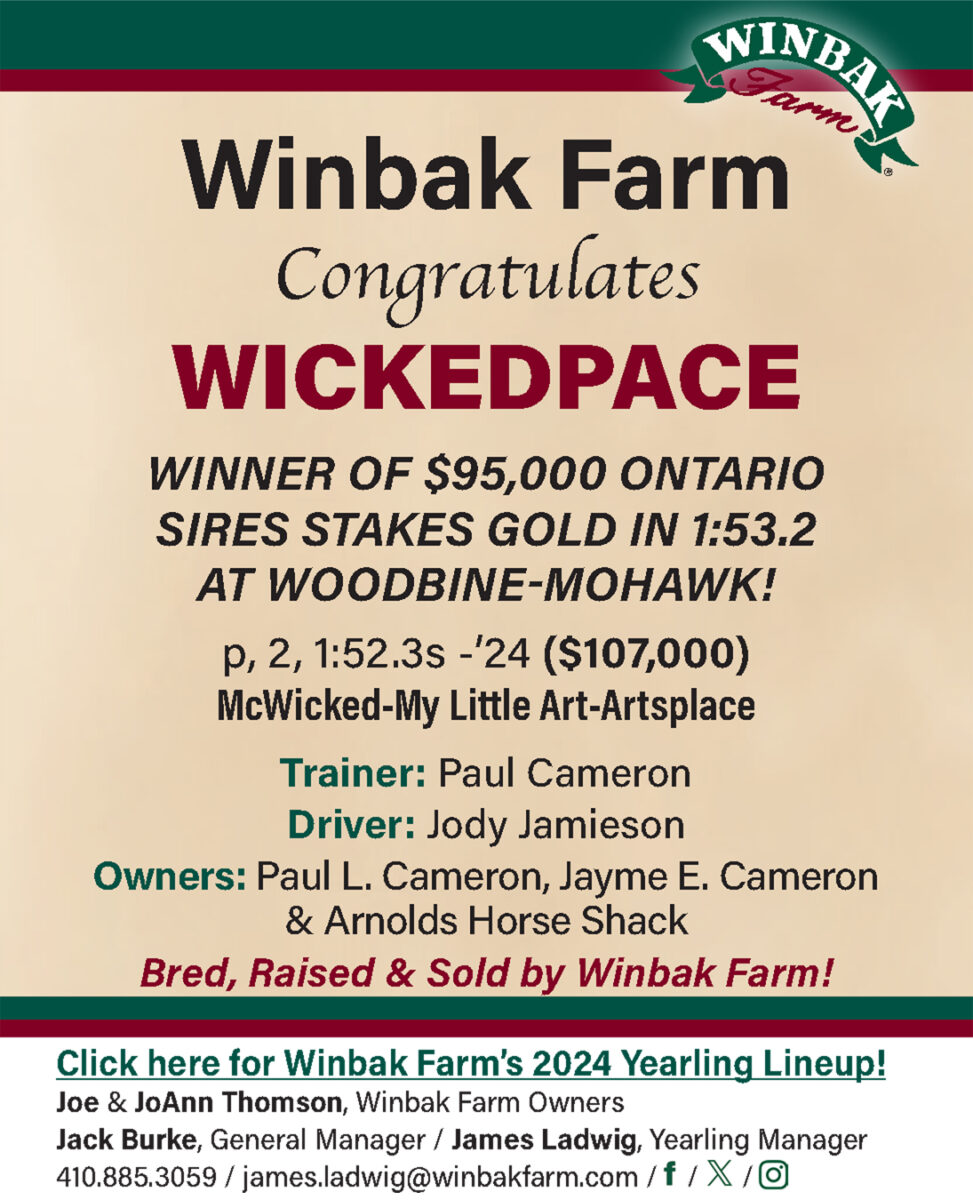

The inside story on how Hanover selected matings for its mares
by Murray Brown
I thought I’d start off the new year with a New Year’s tale from long ago.
The time was the early morning of January 1, 1963.
Lawrence Sheppard, the owner and co-founder of Hanover Shoe Farms, was visited by his farm superintendent Harry Moss.
Harry told Mr. Sheppard that he had both good news and bad news.
“Out with it,” Mr. Sheppard said to Moss.
“The good news, Mr. Sheppard, is that Lovely Hanover had a beautiful Hoot Mon filly last night,” Moss said.
“The bad news is that she had the filly 15 minutes before midnight, so that technically makes her a yearling. But only the two of us know about it, so we can register her as being born in January.”
Mr. Sheppard looked at Moss and said, “Two is one too many.”
The foal was properly registered as being a yearling born in December and was named December Hanover.
* * *
My next two columns will deal with questions asked by Joel Kravet and Brett Coffey, respectively, concerning procedures while I was at Hanover Shoe Farms.
Kravet asks: How did Hanover go about choosing prospective mates for its mares? Did a situation present itself where Hanover had to decide whether to utilize their bookings to a popular stallion with their own mare or to sell that booking?
The second question is easily answered by saying, almost never.
That’s not to say it has never happened.
Occasionally, a great mare or an extremely good and loyal customer came along with a mare and the powers that be determined that Hanover would be better served by dropping one mare from its allotment to serve what was perceived as the greater good.
This is how the booking procedures evolved in the 52 plus years that I was there.
The procedures involved in booking the mares have evolved significantly.
The goals were twofold:
(a) To breed and raise the best possible horse that we could.
(b) To try to predict how the market would be in the almost three years between booking the mare and selling the subsequent yearling.
Neither goal was always easy to achieve, but we did our best.
In my first two to three decades at Hanover it involved a long and tedious process by which we went through all the mares, pacers and trotters intermingled and listed in alphabetical order. It also limited our choices to stallions standing at Hanover.
As one could imagine, we were all over the ballpark. It was far from being efficient. The whole procedure usually took about three complete days.
In recent years it has evolved as follows. I cannot remember a session that took more than a single day.
1. Shortly after the sale in November, I sent out a template listing by stallion the number of bookings that Hanover was entitled to each stallion in which the Farms was either standing or held an interest in. In some cases I would recommend that we breed more than our allotment, in others less. I would also make suggestions about horses to which we should contemplate breeding by either paying the stud fee or through trading of bookings.
This template was subject to any additions or deletions recommended by those receiving it. The template in recent years was sent to Dr. Bridgette Jablonsky, Russell Williams, Jim Simpson, Pete Spears, Ryan Mitchell, Dale Welk and Gunjan Patel. Suggestions and changes were often made.
2. Dr. Jablonsky would then rate the mares separated by gait, numerically with 10 being the top number and one the lowest. A 10 was exceedingly rare. I cannot recall the number one ever being handed out.
3. Using the quality numbers furnished by Dr. Jablonsky, Ryan Mitchell — and before him Jim Harvey — would then publish an analysis of each mare, including her physical description, how Hanover acquired her, what price they paid, her breeding history, a listing of all her foals, a description of each one, what they brought as yearlings, who bought them and if they raced, how they did, including their records and earnings. This information was distributed to all who had previously received the template and any additions or deletions made to it.
4. A listing of all the mares in numerical order of perceived quality was then sent out. Each recipient was to pick his or her choice of stallion for that particular mare.
5. These listings were then filled in and sent to Ryan.
6. In early January, those making their recommendations would meet and go through the lists beginning usually with the trotters. A listing of each person’s choices by mare would be distributed at that meeting.
7. In a significant number of the cases, the stallion choice was unanimous. So there was very little discussion. In many cases, the majority ruled for one horse above all others. That horse was usually the one chosen, but not always. If a dissenter felt strongly about his or her choice and would furnish a good reason for feeling that way, he or she would usually win out.
8. Throughout the meeting, tallies were kept on the individual stallions in order to try to keep within the proscribed numbers and also to make sure that no horses were being neglected or over-subscribed.
9. The meetings usually began at 8 a.m. and finished somewhere around 4 p.m., with a short break for lunch.
10. After the meeting, a listing of the tentative bookings was distributed for the participants “to sleep on.” A few changes were generally made, but for the most part the final list consisted of the results of the meeting.
Have a question for The Curmudgeon?
Reach him by email at: hofmurray@aol.com.















